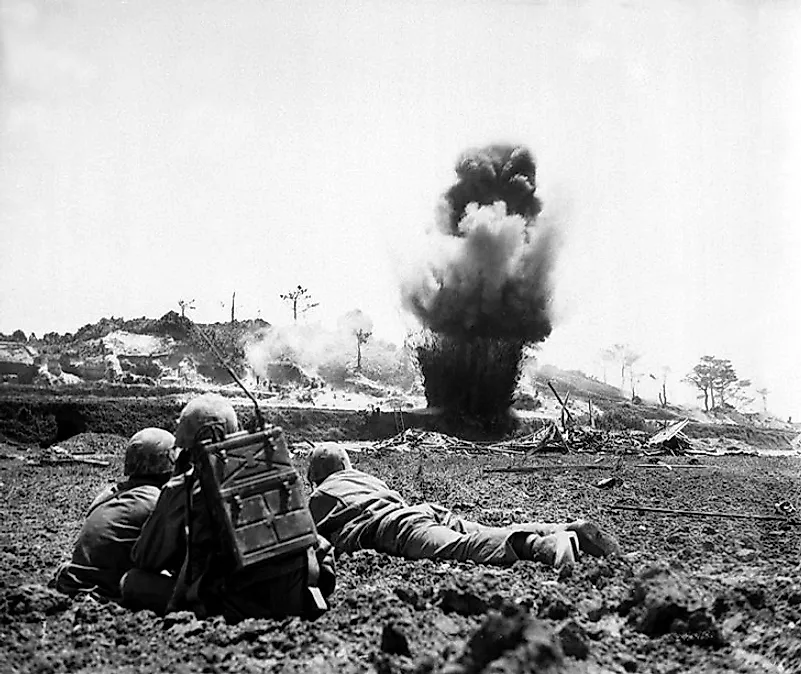
Major Battles Of World War II (WW2)
World War II was one of the most formative events of the 20th century. It began on September 1st, 1939 with the Nazi German invasion of Poland, and ended on September 2nd, 1945 when Imperial Japan formally signed its terms of surrender to become the last of the Axis powers to fall. It pitted the Allied Powers led by Britain, the United States, Russia, and France, against the Axis powers of Hitler-led Nazi Germany, Fascist Italy, and Imperial Japan. While impossible to fully explain in a short article, addressing the conflict's major battles provides a relatively concise overview. Indeed, rather than being mere military campaigns, the outcomes of these battles shaped the futures of Europe, Asia, and the entire world.
The Invasion Of Poland
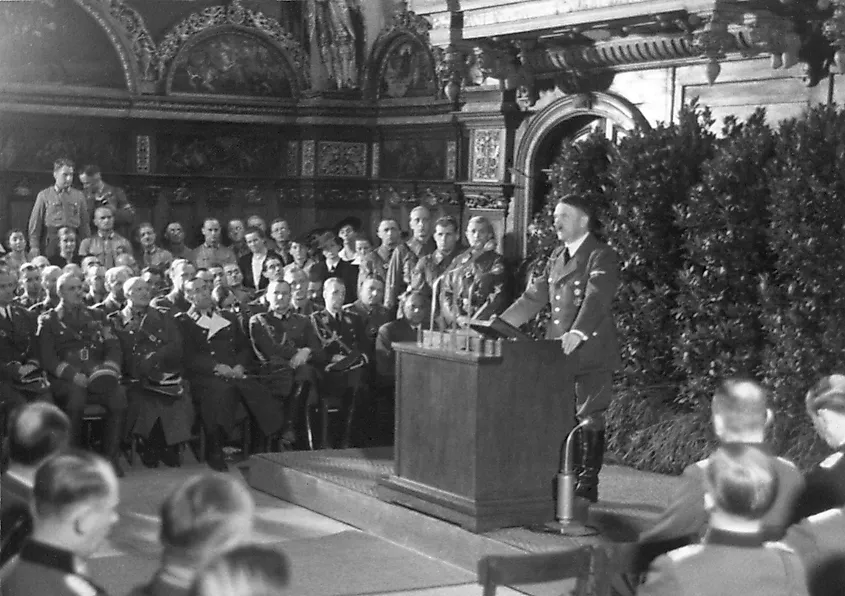
On September 1, 1939, Nazi Germany invaded Poland, marking the beginning of the Second World War, as France and the United Kingdom (UK) declared war on Germany shortly afterward. While the Polish army was about the same size as the German army on paper, poor supplies and technology made them no match for the German Blitzkrieg. Furthermore, Polish troops were too thinly spread across the Polish-German border, meaning that the Wehrmacht easily broke through their defenses. Then, on September 17, the Soviet Union (USSR) also invaded. Despite being ideological enemies (and "racial" enemies according to the Nazis), the USSR and Germany signed a non-aggression pact the previous month to facilitate the would-be partition of Poland. Thus, by early October 1939, the German and Soviet invasion was complete, with the Nazis occupying the west of the country and the Soviets occupying the east.
The Battle Of Dunkirk
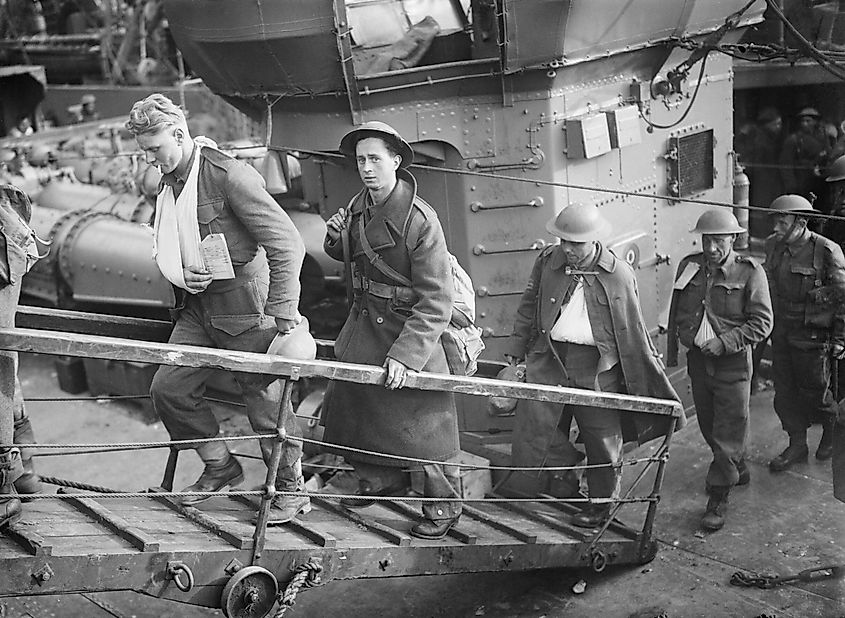
In 1940, following the Nazi takeover of Norway, Denmark, the Netherlands, Belgium, and Luxembourg, Germany invaded France. Despite the Maginot Line, a line of concrete fortifications built by France following the First World War, the German Army quickly swept through the country. By late May, Allied troops found themselves surrounded in Dunkirk. However, despite attacks from the Luftwaffe (the German Air Force), German infantry never closed in for a final attack.
The reasoning behind this decision is still unclear to historians. Some speculate it was due to Hitler's belief that the Allied forces were essentially already defeated. Others assert it was to give the German Army some rest, as their advances had been so rapid up to this point. Near the end of the war, Hitler himself claimed that he was allowing time for British Prime Minister Winston Churchill to make a deal with Germany. However, given the self-serving nature of such a statement and Hitler's record of not respecting peace agreements, this justification does not hold much water. Regardless of the reason, the decision to let up allowed the British to gather as many boats as possible, resulting in 340,000 troops fleeing to the UK in one of the largest evacuations of all time. Hence, despite a massive military defeat, with France ultimately falling, British propaganda portrayed the evacuation of Dunkirk as a victory.
Operation Barbarossa
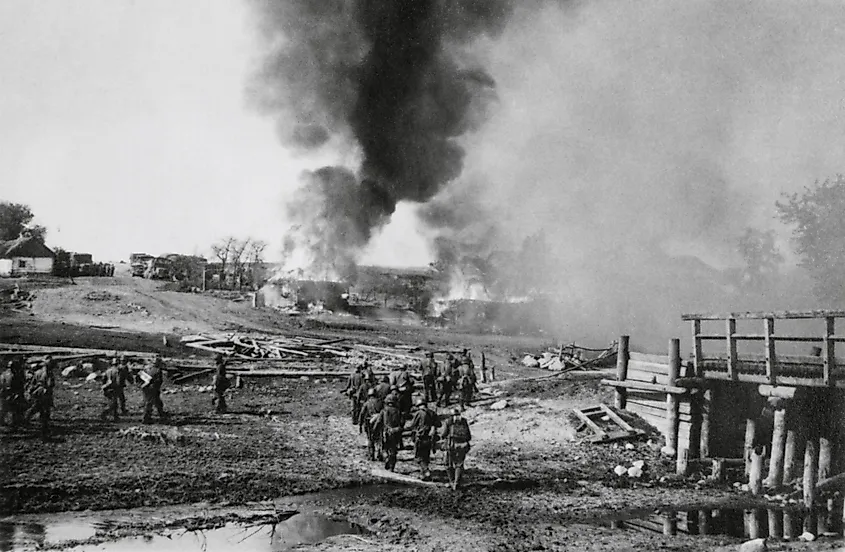
On June 22, 1941, the Third Reich (Nazi Germany) attacked the Soviet Union. Known as Operation Barbarossa, this invasion was crucial for achieving Hitler's goal of Lebensraum (living space) in the east. The German army was divided into three prongs. Army Group North's objective was to capture Leningrad (Saint Petersburg). Army Group Center's goal was Moscow. Finally, Army Group South's objective was Ukraine, followed by the oil fields in the Caucasus. Despite the three groups initially making progress, all were eventually stopped.
A fierce battle in the winter of 1941 to 1942 pushed the Army Group Center from Moscow. This occurred for two reasons. First, following the invasion, Soviet leader Joseph Stalin was despondent. Having signed a non-aggression pact with Hitler only two years prior, he did not want to believe a betrayal was possible. Therefore, Stalin retreated to his Dacha on the outskirts of Moscow in a state of denial. However, he remerged in time for the November 7th Revolution Day parade. This celebration lifted the spirits of the Red Army and the Soviet citizens, giving them the willpower to push out the Wehrmacht. The second reason for the German defeat was Soviet General Georgy Zhukov. At the beginning of the invasion, Zhukov was stationed in the east fighting the Japanese. After beating them in the Battle of Khalkhin Gol, Zhukov then came to the European front, thereby organizing the defense of Moscow and playing a significant role in defeating the Germans.
Army Group South halted in the southern Soviet city of Stalingrad. The battle began in July 1942 and by October, the Germans had taken most of the city. However, as winter fell, morale dropped. Moreover, in November, the Soviets launched a massive counterattack in which two prongs of the Red Army about 50 miles north and south of Stalingrad linked up, completely encircling the Germans. At this point, the Army Group South had lost the battle and by the beginning of February 1943, all had surrendered. Stalingrad thus marked a turning point in the Second World War. It signified the furthest extent of the Third Reich's territorial reach. Furthermore, for the majority of the rest of the conflict, the German Army was on the defensive.
Army Group North retreated from Leningrad in 1944 after one of the deadliest sieges in history. Indeed, rather than occupying it, this prong of the German Army had orders to completely annihilate the city. They destroyed all transportation in and out of Leningrad in August and September 1941. Thereafter, the city experienced heavy bombardment by artillery and the Luftwaffe for two and a half years. Leningraders starved, mostly surviving on less than half a gram of sawdust-laden bread a day. Reports of cannibalism were also common. By the time the Red Army finally beat back the Germans in January 1944, between 600,000 to a million people had died.
Pearl Harbor
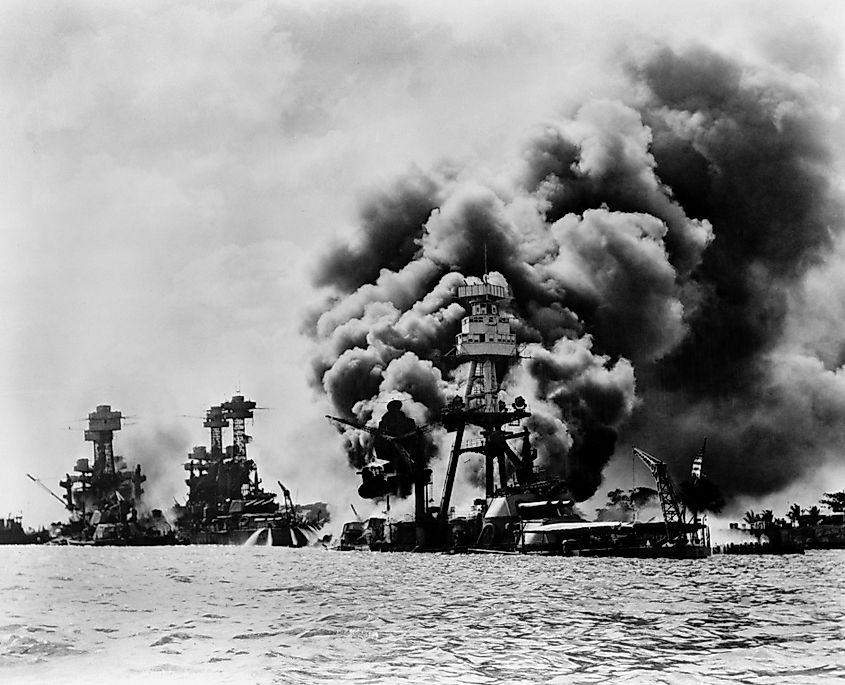
The Japanese Empire attacked the Hawaiian naval base of Pearl Harbor on December 7, 1941. One reason for this attack was the American sanctions placed on Japan following its invasion of countries like China, Vietnam, Cambodia, and Laos. Furthermore, some in the Japanese military thought that the US was about to declare war on the Empire and thus wanted to weaken the American military beforehand. The attack killed around 2,400 people, most of whom were soldiers. Furthermore, it destroyed eight battleships, eight cruisers, thirty destroyers, four submarines, and 390 aircraft.
Pearl Harbor signified the American entry into World War II via the Pacific theatre. Moreover, only days after the attack, Hitler declared war on the United States, thereby involving the US in the European conflict. Similar to his decision regarding Dunkirk, the logic behind Hitler's reasoning here is unclear. Given Germany's increasingly precarious position in the Soviet Union, diverting any resources away from the Eastern Front made little sense. However, some speculate that Hitler had planned for some sort of military engagement with the United States for years. Therefore, after Pearl Harbor, he may have thought that the Americans would be weak, making then an optimal time to initiate a conflict. No matter the reasoning, the United States was now involved in both the European and Pacific wars.
The Battle Of Midway
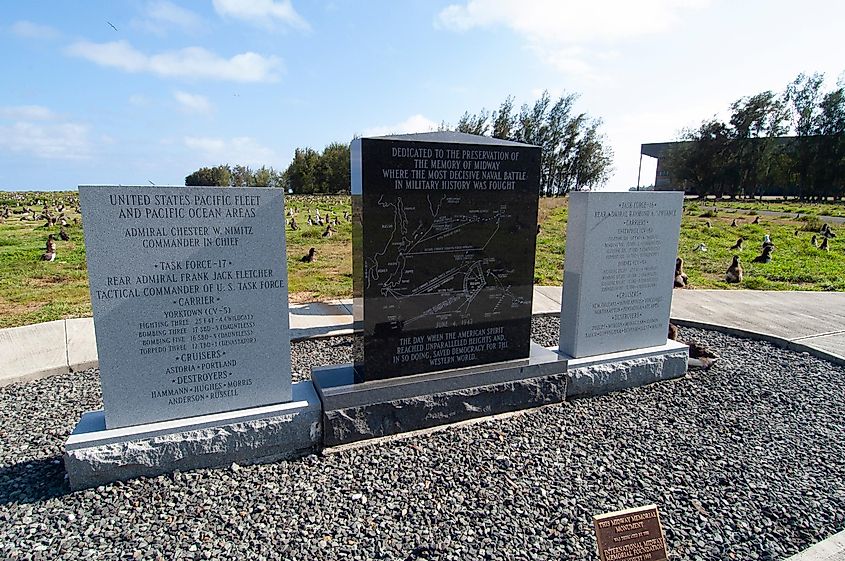
From June 4th to June 7, 1942, the Japanese attacked the tiny US island of Midway in an attempt to destroy American aircraft carriers. However, having broken the Japanese code, the Americans were ready when the attack began. Therefore, despite hitting some key strategic targets, such as the Midway airfield, the aircraft carriers survived. Moreover, the Americans followed this offensive with a counterattack. After the first two waves not doing much damage, the third American attack wave destroyed four Japanese aircraft carriers. With their fleet decimated, the Japanese retreated. Indeed, this defeat was the turning point for the war in the Pacific, as it allowed the Americans to go on the offensive and start the island-hopping that would characterize the rest of their military campaign.
The Battle Of Kursk
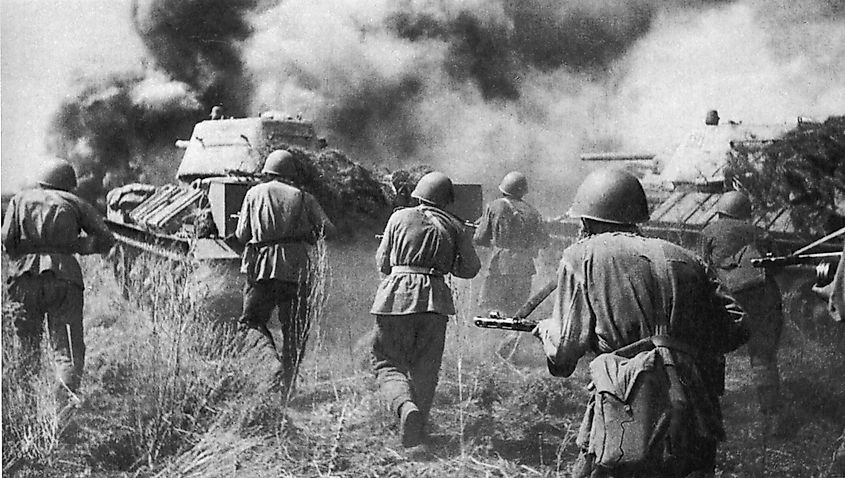
The Battle of Kursk from July to August 1943 marked the last German offensive of the Second World War. After defeat in Moscow and Stalingrad, and facing imminent defeat in Leningrad, Hitler hoped that taking Kursk, a city not too far from the Russian-Ukrainian border, would halt the Soviet counteroffensive. He also thought that a victory here would improve Germany's reputation amongst its allies, such as Italy, as Mussolini was contemplating withdrawing from the conflict. Known as the largest tank battle in history, the Soviets lost more soldiers than the Germans in the Battle of Kursk. However, as the Allied invasion of Sicily began at the same time, Hitler had to divert troops from the Soviet Union to Italy. He then canceled the offensive after only a week, allowing the Soviets to mount a counterattack. In short, all these factors meant that Kursk was the last significant military push by the Third Reich.
The Invasion Of Normandy
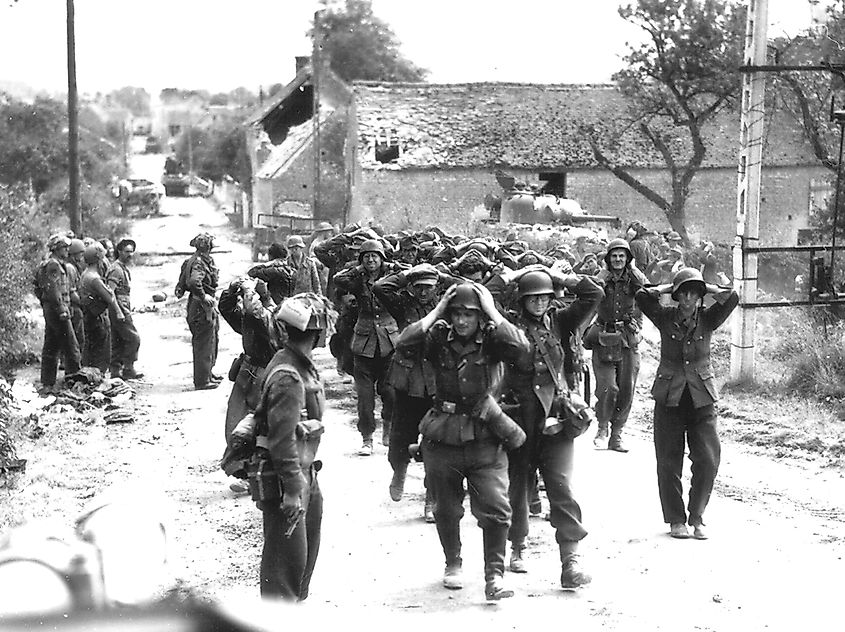
Following Allied incursions into Italy in 1943, the invasion of Normandy in June 1944 marked the first significant non-Russian Allied foothold in Europe since the evacuation of Dunkirk. Landing on five beaches, with the Americans at Omaha and Utah, the British at Sword and Gold, and the Canadians at Juno, all attacks were successful. Then, despite initially getting bogged down by Normandy's difficult terrain, the Allies began to make solid progress, and by August, they had retaken Paris. In addition, the Soviets pushed the Germans out of Bulgaria and Romania. Thus, the invasion of Normandy signified the beginning of the end for the Nazis.
The Battle Of Berlin
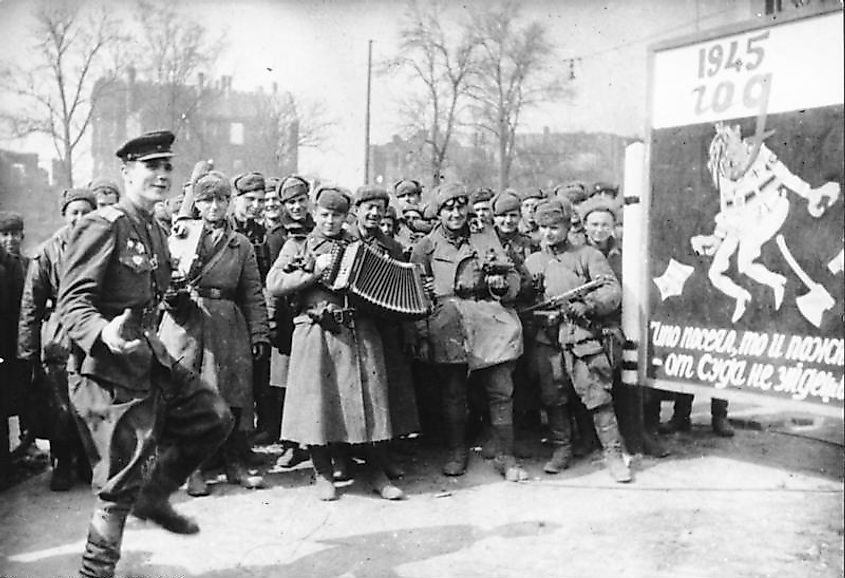
The European theatre of World War II ended with the Battle of Berlin from April to May 1945. Beginning on April 16, three Soviet army groups attacked the city from the north, east, and south. In a last-ditch attempt to save Berlin, Hitler ordered all men not already in the army, most of whom were either young, old, or sick, to take up arms. Despite these efforts, the Red Army controlled most of the city by April 24. On April 30, with Soviet troops only blocks from his bunker, Hitler committed suicide. Thereafter, Berlin's garrison announced an unconditional surrender on May 2, followed by Germany's surrender on May 8. The war in Europe was officially over.
The Battle Of Okinawa
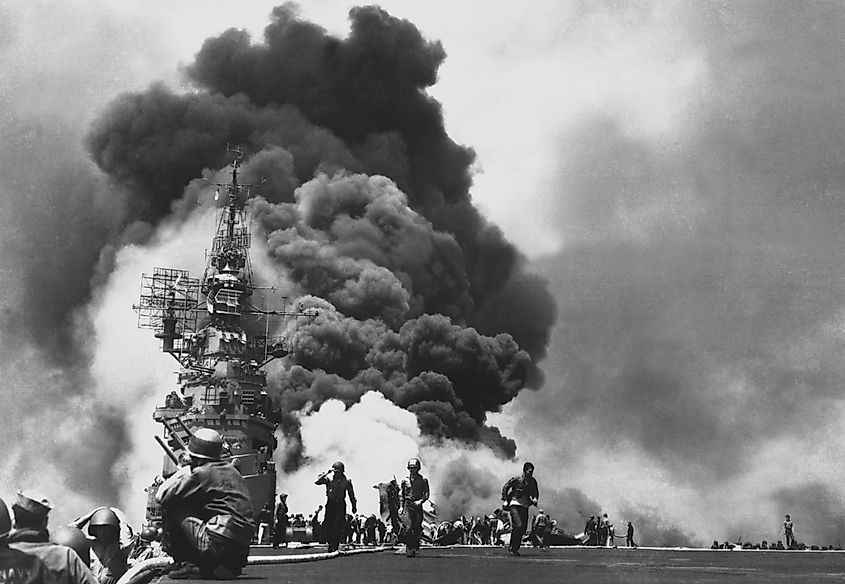
The Battle of Okinawa lasted from April 1 to June 22, 1945. It perhaps saw the fiercest fighting of the American island-hopping campaign due in no small part to the number of Japanese kamikaze attacks. In total, about 12,000 Allied troops and 100,000 Japanese soldiers died. Furthermore, following the battle, many local Okinawans committed suicide rather than surrendering. This display, along with the general ferocity of the fighting, contributed to the American decision to drop the atomic bomb on Hiroshima and Nagasaki. Indeed, fearing an uncontrollable bloodbath if the Allies embarked on an amphibious assault of the Japanese main islands, some believed that using nuclear weapons would be a quicker and strangely less deadly way to force a Japanese capitulation.
Each of these major battles affected the outcome of the Second World War. While certainly not an exhaustive list, this description will hopefully provide one with a clearer understanding of the conflict that shaped the second half of the 20th century. Between these superpowers, the series of battles fought claimed millions of military and civilian lives on all sides and will forever leave a mark on the world.











